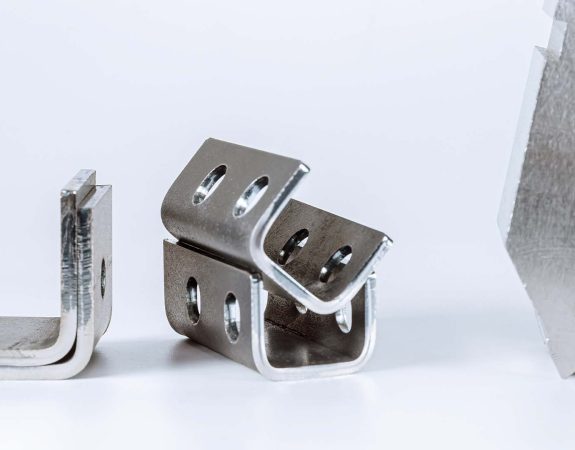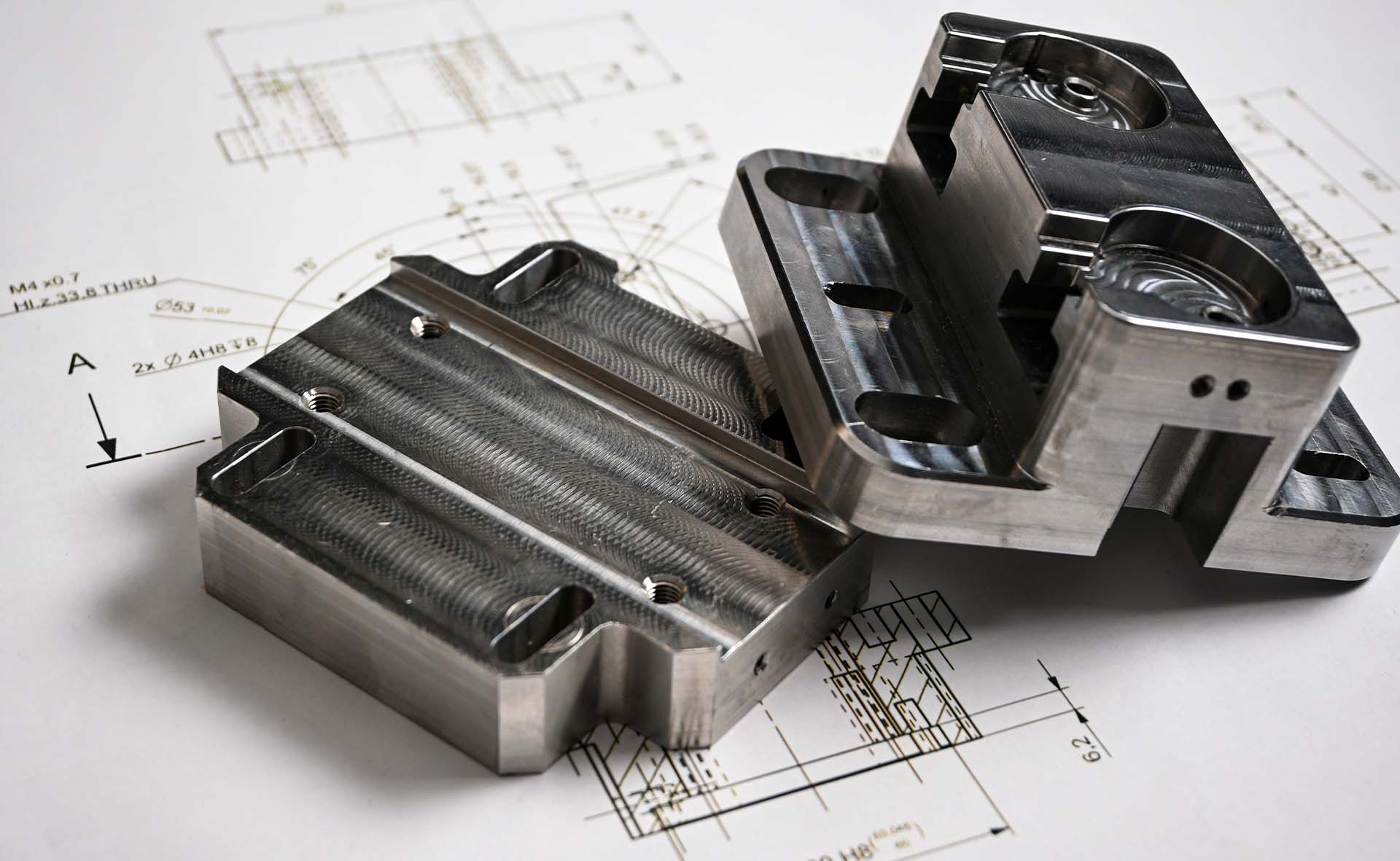Sheet metal fabrication is a great manufacturing process for creating long-lasting, durable, precise metal parts and enclosures. Because sheet metal parts are made from flat sheets of metal, different design considerations are necessary as opposed to CNC machining and additive manufacturing. In this article, we’ve outlined some of the top design tips and practices to help you optimize your next sheet metal design to reduce costs and maximize efficiency.
1. Reduce the Number of Parts
Combining two or more parts into a single one is a cost-effective way to reduce the price of sheet metal fabrication jobs. If you can attach two parts via a bend, or turn separate panels into a single piece, it is highly recommended you do so.
2. Use a Consistent Bend Radius
When designing a part, it’s essential to understand that the bend radii and minimum flange lengths are dictated by the tooling used. Generally, the bend radius is dictated by the V opening in the die, and the angle is dictated by the depth of punch into the die. So, if possible, use the same bend radius for all of the bends in your design. This will help eliminate additional set up time and reduce overall cost.

3. Simplify Your Folds
With any design, the more complicated your part is, the more expensive it will be. To lower overall costs, design for simple angled bends with a radius equal to or greater than the thickness of the sheet. Small bends on large, thick sheet metal parts can be a challenge to accurately fabricate, so they should be avoided if possible.
4. Reduce the Number of Cutouts
The more cutouts your design has, the longer the time under the laser it will require, thus driving up production costs. Vent patterns, in particular, can be very costly — especially when the pattern has a large number of small cutouts. Switching to longer slots for your vent cutouts can help significantly reduce overall costs.
5. Pick a Less Expensive Hole Type
The type of hole you choose can have a significant impact on the project’s overall cost. In some instances, tapped holes can be replaced with fasteners, and countersinks can be switched to through holes. This eliminates the need for additional machining steps and processes, reducing both labor and materials costs.
6. Choose Fasteners Over Welds
It’s always worth asking yourself, is welding an absolute necessity? In certain instances, welds may be a clear winner over fasteners. In situations where both methods can help you achieve similar design goals, opt for fasteners. It helps keep costs to a minimum and is easier to maintain.
7. Limit Tight Tolerances
While this may seem like an obvious tip, it’s often overlooked. The tighter the tolerances, the more expensive the job. To eliminate unnecessary costs, only assign tolerances to mission critical features and surfaces. For features left unspecified, standard tolerances are used.
Sheet Metal Tolerance Guide: view our sheet metal tolerance sheet which summarizes the standard tolerances we use here at HLH Rapid.

Send us your 3D CAD designs and get a quote today
Use the Sheet Metal Design Tips and Guidelines to help optimize your designs for the sheet metal fabrication process then export your CAD files into an STP format. Once ready, upload your files here to get a quote or have our engineers review your designs.
